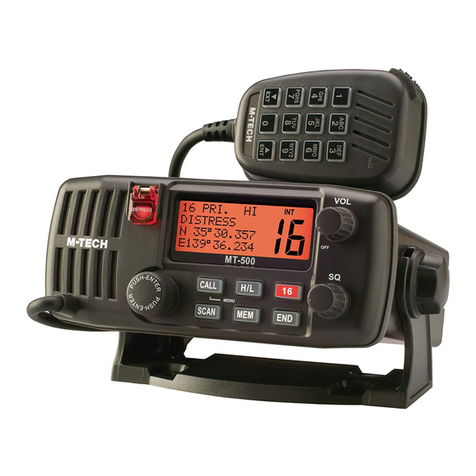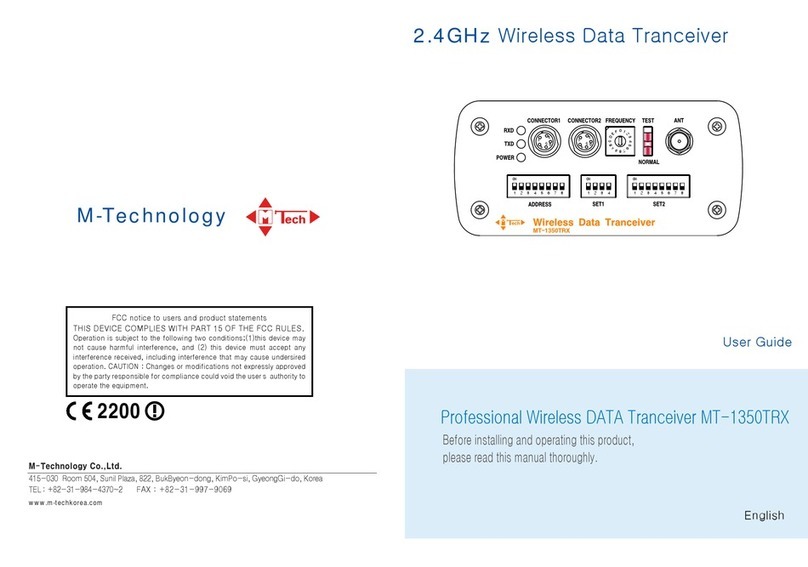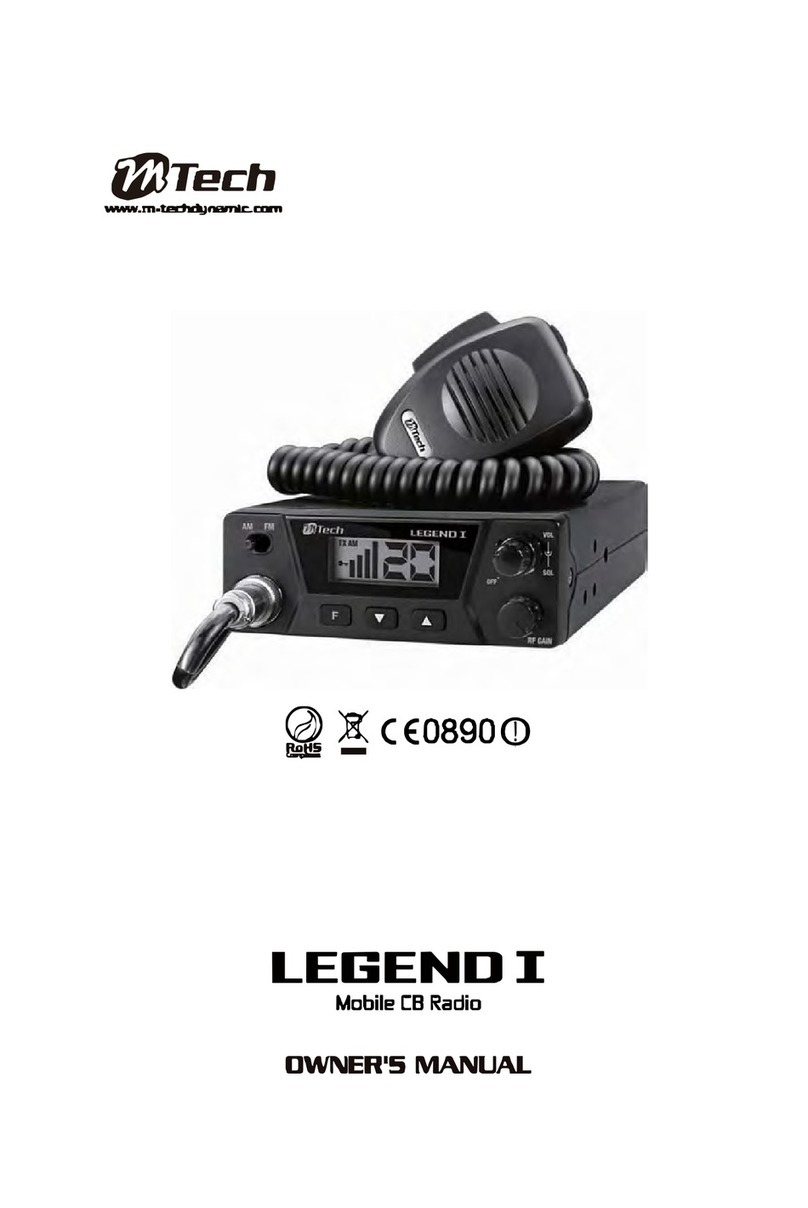
INTRODUCTION
1.4 Safety training information
CAUTION
To ensure that your exposure to RF electromagnetic
energy is within the FCC allowable limits, always
adhere to the following guidelines:
• DO NOT operate the radio without a proper
antenna attached, as this may damage the
radio and may also cause you to exceed FCC RF
exposure limits. A proper antenna is the antenna
supplied with this radio by the manufacturer
or an antenna specifi cally authorized by the
manufacturer for use with this radio.
• DO NOT transmit for more than 50% of total radio
use time (“50% duty cycle”). Transmitting more
than 50% of the time can cause FCC RF exposure
compliance requirements to be exceeded.
The radio is transmitting when the “Tx indicator”
appears. You can cause the radio to transmit by
pressing the “PTT” switch.
• ALWAYS use M-Tech authorized accessories
(antennas, batteries, belt clips, speaker/mics, etc.).
Use of unauthorized accessories can cause the
FCC RF exposure compliance requirements to be
exceeded.
• ALWAYS keep the antenna at least 2.5 cm (1 inch)
away from the body when transmitting, and only
use the M-Tech belt-clips which are listed in this
manual when attaching the radio to your belt, etc.
To provide the recipients of your transmission the
best sound quality, hold the transceiver at least 5
cm (2 inches) from your mouth, and turned slightly
to one side. The information listed above provides
the user with the information needed to make him
or her aware of RF exposure, and what to do to
assure that this radio operates within the FCC RF
exposure limits of this radio.
Electromagnetic Interference/Compatibility
During transmissions, your M-Tech radio generates
RF energy that can possibly cause interference
with other devices or systems. To avoid such
6
SECTION 1































